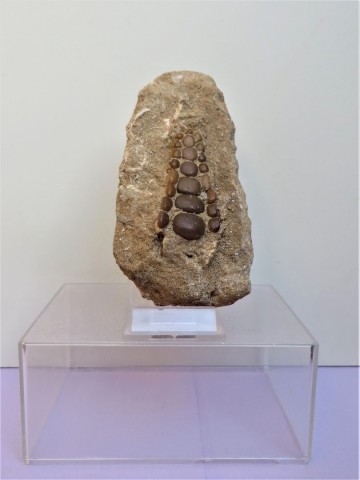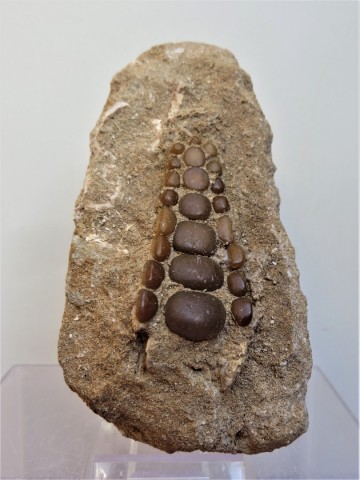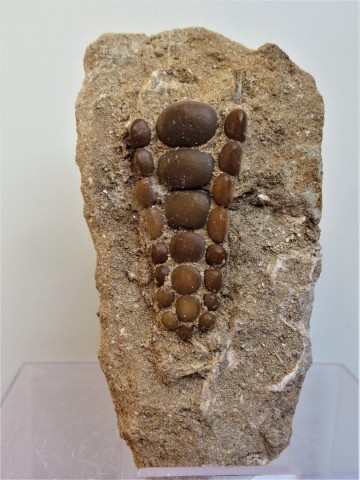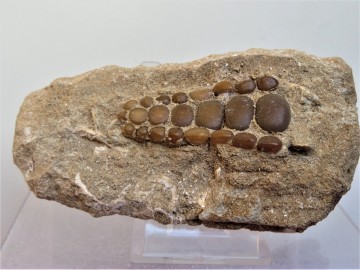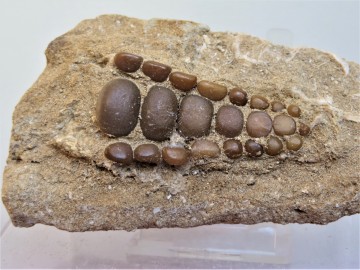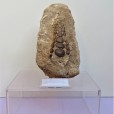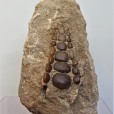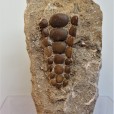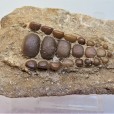Phacodus punctatus
Phacodus punctatus • Pycnodont Jaw Section
Educational Quality Fossil • Eocene Period from Morocco
Deze worden zelden zo compleet aangeboden .
Pycnodus (from Greek for crowded teeth) is an extinct genus of ray-finned fish ranging from the Cretaceous to Eocene periods. As its name suggests, it is the type genus of Pycnodontiformes. Pycnodontiforms, order of extinct fishes of the class Actinopterygii, containing the genus Pycnodus, were common in the seas of North Africa 70 million years ago. They were small to middle sized fish, with laterally compressed bodies, and an almost circular outline. Pycnodontiform fishes lived mostly in shallow-water seas.
The known whole fossils of Pycnodus are around 12 centimetres (5 in) long, and have a superficial resemblance to angelfish or butterflyfish. The animals, as typical of all other pycnodontids, had many knob-like teeth, forming pavements in the jaws with which to break and crush hard food substances, probably mollusks and echinoderms. These teeth are the most common form of fossil.
Collecting Location:
These specimens come from an area in Morocco famous for its fossil-rich phosphate beds. It is located in the Oulad-Abdoun Basin surrounded by the Atlas Mountains, near the town of Khouribhga . Many fossils come from the phosphate layers this area, including mosasaurs, elasmosaurs, plesiosaurs, crocodiles and seve
ral species of carnivorous fish, including the Enchodus libyus.Taxonomy
Pycnodontiforms, order of extinct fishes of the class Actinopterygii, containing the genus Pycnodus. It is related to the modern day angelfish or butterflyfish. This fish lived in what is now Morocco during the Late Cretaceous Period.
